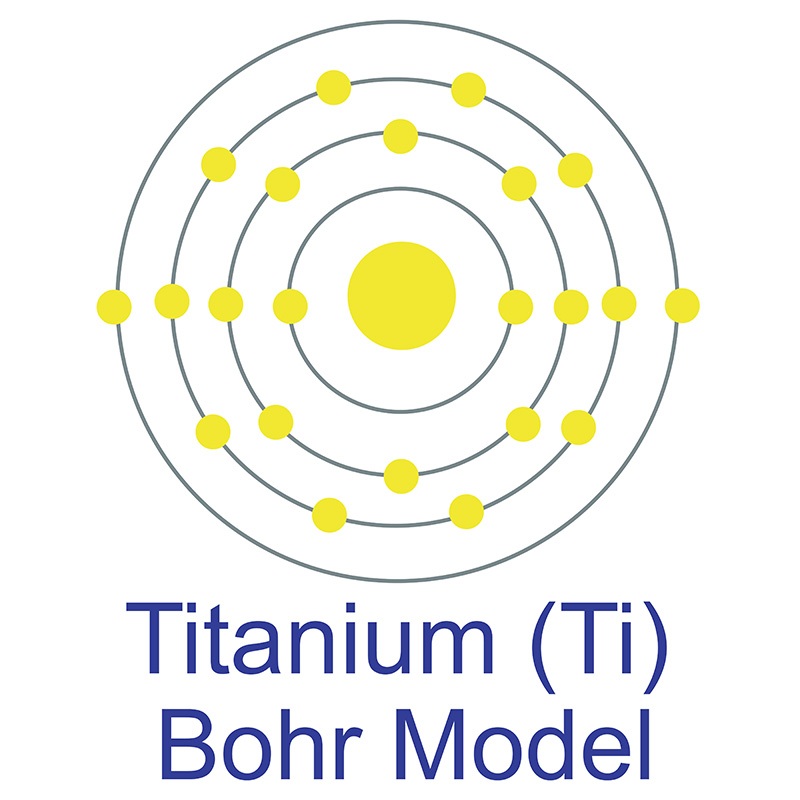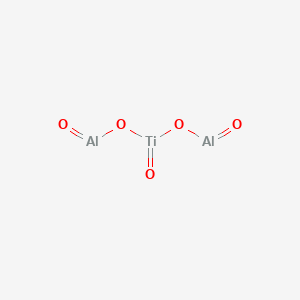SECTION 1. IDENTIFICATION
Product Name: Aluminum Titanate Sputtering Target
Product Number: All applicable American Elements product codes, e.g. AL-TAT-02-ST
, AL-TAT-025-ST
, AL-TAT-03-ST
, AL-TAT-035-ST
, AL-TAT-04-ST
, AL-TAT-05-ST
CAS #: 12004-39-6
Relevant identified uses of the substance: Scientific research and development
Supplier details:
American Elements
10884 Weyburn Ave.
Los Angeles, CA 90024
Tel: +1 310-208-0551
Fax: +1 310-208-0351
Emergency telephone number:
Domestic, North America: +1 800-424-9300
International: +1 703-527-3887
SECTION 2. HAZARDS IDENTIFICATION
2.1 Classification of the substance or mixture
Classification according to Regulation (EC) No 1272/2008
GHS07
STOT SE 3 H335 May cause respiratory irritation.
Classification according to Directive 67/548/EEC or Directive 1999/45/EC
Xi; Irritant
R37: Irritating to respiratory system.
Information concerning particular hazards for human and environment: N/A
Other hazards that do not result in classification No data available
2.2 Label elements
Labelling according to Regulation (EC) No 1272/2008 The substance is classified and labelled according to the CLP regulation.
Hazard pictograms

GHS07
Signal word Warning
Hazard statements
H335 May cause respiratory irritation.
Precautionary statements
P261 Avoid breathing dust/fume/gas/mist/vapors/spray.
P304+P340 IF INHALED: Remove person to fresh air and keep comfortable for breathing.
P312 Call a POISON CENTER/doctor/if you feel unwell.
P405 Store locked up.
P403+P233 Store in a well-ventilated place. Keep container tightly closed.
P501 Dispose of contents/container in accordance with local/regional/national/international regulations.
2.3 Other hazards
Results of PBT and vPvB assessment
PBT: N/A
vPvB: N/A
SECTION 3. COMPOSITION/INFORMATION ON INGREDIENTS
3.1 Substances
CAS# Designation:
12004-39-6 Aluminum titanium oxide
Identification number(s):
EC number: 234-456-9
SECTION 4. FIRST AID MEASURES
4.1 Description of first aid measures
If inhaled:
Supply patient with fresh air. If not breathing, provide artificial respiration. Keep patient warm. Consult doctor if symptoms persist.
Seek immediate medical advice.
In case of skin contact:
Instantly wash with water and soap and rinse thoroughly.
Seek immediate medical advice.
In case of eye contact:
Rinse opened eye for several minutes under running water. Then consult doctor.
If swallowed:
Seek medical treatment.
4.2 Most important symptoms and effects, both acute and delayed:
No data available
4.3 Indication of any immediate medical attention and special treatment needed:
No data available
SECTION 5. FIREFIGHTING MEASURES
5.1 Extinguishing media
Suitable extinguishing agents Product is not flammable. Use fire-fighting measures that suit the surrounding fire.
5.2 Special hazards arising from the substance or mixture If this product is involved in a fire, the following can be released:
5.3 Advice for firefighters
Protective equipment:
Wear self-contained breathing apparatus.
Wear full protective suit.
SECTION 6. ACCIDENTAL RELEASE MEASURES
6.1 Personal precautions, protective equipment and emergency procedures
Use personal protective equipment. Keep unprotected persons away.
Ensure adequate ventilation
6.2 Environmental precautions: Do not allow material to be released to the environment without official permits.
6.3 Methods and materials for containment and cleanup: Ensure adequate ventilation.
Prevention of secondary hazards: No special measures required.
6.4 Reference to other sections
See Section 7 for information on safe handling
See section 8 for information on personal protection equipment.
See Section 13 for information on disposal.
SECTION 7. HANDLING AND STORAGE
7.1 Precautions for safe handling
Keep containers tightly sealed.
Store in cool, dry place in tightly closed containers.
Ensure good ventilation/exhaustion at the workplace.
Information about protection against explosions and fires: The product is not flammable
7.2 Conditions for safe storage, including any incompatibilities
Requirements to be met by storerooms and containers: No special requirements.
Information about storage in one common storage facility: Not required.
Further information about storage conditions:
Keep container tightly sealed.
Store in cool, dry conditions in well-sealed containers.
7.3 Specific end use(s) No data available
SECTION 8. EXPOSURE CONTROLS/PERSONAL PROTECTION
Additional information about design of technical systems:
Properly operating chemical fume hood designed for hazardous chemicals and having an average face velocity of at least 100 feet per minute.
8.1 Control parameters
Components with critical values that require monitoring at the workplace: Not required.
Additional information: No data
8.2 Exposure controls
Personal protective equipment
General protective and hygienic measures
The usual precautionary measures should be adhered to in handling the chemicals.
Keep away from foodstuffs, beverages and food.
Instantly remove any soiled and impregnated garments.
Wash hands during breaks and at the end of the work.
Maintain an ergonomically appropriate working environment.
Breathing equipment: Use breathing protection with high concentrations.
Protection of hands:
Inspect gloves prior to use.
The selection of the suitable gloves does not only depend on the material, but also on further marks of quality and varies from manufacturer to manufacturer.
Material of gloves Impervious gloves
Eye protection: Safety glasses
Body protection: Protective work clothing.
SECTION 9. PHYSICAL AND CHEMICAL PROPERTIES
9.1 Information on basic physical and chemical properties
Appearance:
Form: Powder or solid in various forms
Colour: White
Smell: Odorless
Odor threshold: No data available.
pH: N/A
Melting point/Melting range: No data available
Boiling point/Boiling range: No data available
Sublimation temperature / start: No data available
Flash point: N/A
Inflammability (solid, gas) No data available.
Ignition temperature: No data available
Decomposition temperature: No data available
Self-inflammability: No data available.
Danger of explosion: Product is not explosive.
Critical values for explosion:
Lower: No data available
Upper: No data available
Steam pressure: N/A
Density No data available
Relative density No data available.
Vapor density N/A
Evaporation rate N/A
Solubility in / Miscibility with
Water: Insoluble
Partition coefficient (n-octanol/water): No data available.
Viscosity:
Dynamic: N/A
Kinematic: N/A
9.2 Other information No data available
SECTION 10. STABILITY AND REACTIVITY
10.1 Reactivity No data available
10.2 Chemical stability Stable under recommended storage conditions.
Thermal decomposition / conditions to be avoided: No decomposition if used and stored according to specifications.
10.3 Possibility of hazardous reactions No dangerous reactions known
10.4 Conditions to avoid No data available
10.5 Incompatible materials: No data available
10.6 Hazardous decomposition products: No decomposition products known.
SECTION 11. TOXICOLOGICAL INFORMATION
11.1 Information on toxicological effects
Acute toxicity: No effects known.
LD/LC50 values that are relevant for classification: No data
Skin irritation or corrosion: Irritant for skin and mucous membranes.
Eye irritation or corrosion: Irritant effect.
Sensitization: No sensitizing effect known.
Germ cell mutagenicity: No effects known.
Carcinogenicity: No classification data on carcinogenic properties of this material is available from the EPA, IARC, NTP, OSHA or ACGIH.
Reproductive toxicity: No effects known.
Specific target organ system toxicity - repeated exposure: No effects known.
Specific target organ system toxicity - single exposure: May cause respiratory irritation.
Aspiration hazard: No effects known.
Subacute to chronic toxicity: No effects known.
Additional toxicological information: To the best of our knowledge the acute and chronic toxicity of this substance is not fully known.
SECTION 12. ECOLOGICAL INFORMATION
12.1 Toxicity
Aquatic toxicity: No data available
12.2 Persistence and degradability No data available
12.3 Bioaccumulative potential No data available
12.4 Mobility in soil No data available
Additional ecological information:
Do not allow material to be released to the environment without official permits.
Generally not hazardous for water.
Avoid transfer into the environment.
12.5 Results of PBT and vPvB assessment
PBT: N/A
vPvB: N/A
12.6 Other adverse effects No data available
SECTION 13. DISPOSAL CONSIDERATIONS
13.1 Waste treatment methods
Recommendation
Hand over to disposers of hazardous waste.
Must be specially treated under adherence to official regulations.
Consult official regulations for proper disposal.
Uncleaned packagings:
Recommendation: Disposal must be made according to official regulations.
SECTION 14. TRANSPORT INFORMATION
UN-Number
ADR, IMDG, IATA None
14.2 UN proper shipping name
ADR, IMDG, IATA None
14.3 Transport hazard class(es)
ADR, IMDG, IATA
Class None
Packing group
ADR, IMDG, IATA None
14.5 Environmental hazards: N/A
14.6 Special precautions for user N/A
14.7 Transport in bulk according to Annex II of MARPOL73/78 and the IBC
Code N/A
Transport/Additional information: Not dangerous according to the above specifications.
SECTION 15. REGULATORY INFORMATION
15.1 Safety, health and environmental regulations/legislation specific for the substance or mixture
Australian Inventory of Chemical Substances Substance is not listed.
Standard for the Uniform Scheduling of Drugs and Poisons Substance is not listed.
National regulations
Information about limitation of use:
Employment restrictions concerning young persons must be observed.
For use only by technically qualified individuals.
Water hazard class: Generally not hazardous for water.
Other regulations, limitations and prohibitive regulations
ELINCS (European List of Notified Chemical Substances) Substance is not listed.
Substance of Very High Concern (SVHC) according to the REACH Regulations (EC) No. 1907/2006. Substance is not listed.
The conditions of restrictions according to Article 67 and Annex XVII of the Regulation (EC) No 1907/2006 (REACH) for the manufacturing, placing on
the market and use must be observed.
Substance is not listed.
Annex XIV of the REACH Regulations (requiring Authorisation for use) Substance is not listed.
15.2 Chemical safety assessment: A Chemical Safety Assessment has not been carried out.
SECTION 16. OTHER INFORMATION
Safety Data Sheet according to Regulation (EC) No. 1907/2006 (REACH). The above information is believed to be correct but does not purport to be all inclusive and shall be used only as a guide. The information in this document is based on the present state of our knowledge and is applicable to the product with regard to appropriate safety precautions. It does not represent any guarantee of the properties of the product. American Elements shall not be held liable for any damage resulting from handling or from contact with the above product. See reverse side of invoice or packing slip for additional terms and conditions of sale. COPYRIGHT 1997-2022 AMERICAN ELEMENTS. LICENSED GRANTED TO MAKE UNLIMITED PAPER COPIES FOR INTERNAL USE ONLY.
 Aluminum's name is derived from alumina, the mineral from which Sir Humphrey Davy attempted to refine it from in 1812. Aluminum was first predicted by Antoine Lavoisier 1787 and first isolated by Hans Christian Øersted in 1825. Aluminum is a silvery gray metal that possesses many desirable characteristics. It is light, nonmagnetic and non-sparking. It stands second among metals in the scale of malleability, and sixth in ductility. It is extensively used in many industrial applications where a strong, light, easily constructed material is needed.
Aluminum's name is derived from alumina, the mineral from which Sir Humphrey Davy attempted to refine it from in 1812. Aluminum was first predicted by Antoine Lavoisier 1787 and first isolated by Hans Christian Øersted in 1825. Aluminum is a silvery gray metal that possesses many desirable characteristics. It is light, nonmagnetic and non-sparking. It stands second among metals in the scale of malleability, and sixth in ductility. It is extensively used in many industrial applications where a strong, light, easily constructed material is needed.  Although it has only 60% of the electrical conductivity of copper, it is used in electrical transmission lines because of its light weight. Pure aluminum is soft and lacks strength, but alloyed with small amounts of copper, magnesium, silicon, manganese, or other elements, it imparts a variety of useful properties.
Although it has only 60% of the electrical conductivity of copper, it is used in electrical transmission lines because of its light weight. Pure aluminum is soft and lacks strength, but alloyed with small amounts of copper, magnesium, silicon, manganese, or other elements, it imparts a variety of useful properties.

 The titanium atom has a radius of 147 pm and a Van der Waals radius of 187 pm. Titanium was discovered by William Gregor in 1791 and first isolated by Jöns Jakob Berzelius in 1825. In its elemental form, titanium has a silvery grey-white metallic appearance. Titanium's properties are chemically and physically similar to
The titanium atom has a radius of 147 pm and a Van der Waals radius of 187 pm. Titanium was discovered by William Gregor in 1791 and first isolated by Jöns Jakob Berzelius in 1825. In its elemental form, titanium has a silvery grey-white metallic appearance. Titanium's properties are chemically and physically similar to  Titanium has five naturally occurring
Titanium has five naturally occurring 
